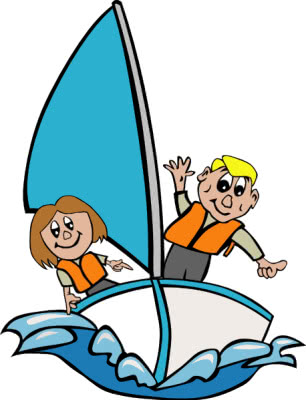
The pool is not the only aquatic environment our children are exposed to in the summer. We have to be cautious anywhere a child could potentially drown and take precautions to prevent accidents. My goal is not to scare your family away from the water, just shed some light on some hazards. Let's take a look at the obvious and not so obvious situations.
Boats
It is absolutely imperative that all children, even strong swimmers, MUST wear a US Coast Guard approved personal flotation device (PFD) on a boat. This includes tubing, jet ski, and even paddle boats. The alternative is just too scary for a mom to think about. Just do it. Adults can make their own decisions when to wear PFDs on a boat, but they should be easily accessible.
Lakes
Even if a child is not on a boat, it's a good idea for him or her to wear a PFD in murkier water, like a lake. Until they are proficient swimmers, it's too easy to lose sight of them. Also, usually there are no lifeguards at private residences, so please have a responsible adult keep an eye on the kids at all times.
Docks/Piers
At the waterside, it's easy for little ones to trip, reach, or fall off the side. An adult should be within arms reach of a nonswimmer or child to prevent an accident. I know many families that apply a rule that children must wear a life vest on the dock. It's a family rule that they obey all the time. You also need to remind older children that the depth of the water may vary, so it can be unsafe to dive in unless approved by an adult. Unfortunately I have personal experience knowing a fatality caused by diving in shallow water.
Oceans
We are so lucky to live near the ocean! Like lakes, the ocean can be murkier, so adult supervision is key. Even though there are sometimes lifeguards, please watch your own children closely. Also, waves can be unpredictable and knock down children. The sea floor may be uneven, causing unsteady footing. Wearing PFDs in water above knee level may be a good idea. The beach may have a flag system indicating the intensity of the waves. With more wind and waves, there may be a higher risk of rip current. Teach older swimmers what to do if they find themselves pulled from the shore.
Splash pads and sprinklers
The biggest risk here, especially for the youngest children, is slipping. It's easy for kids to get excited and run around, possibly tripping over other children or onto the ground. They can get scrapped knees and stubbed toes. Remind older children to watch out for the babies. Consider wearing waterproof shoes (Keens, water shoes, Crocs) if it seems particularly slippery or your child tends to fall a lot.
Lesser known risks
You also need to be observant around showers, baths, and buckets of water. Fountains can be kid magnets (ooh money!) and it just takes a minute for a child to climb in.
I encourage you to check out these links. Don't be scared. Support your child, be aware, and teach them safety skills around the water.
Red Cross - Safety in Lakes, Rivers, and Streams
Rip Currents
US Ocean Safety Page
KidsHealth.org- Water Safety
Hey Elaine DellaNoce, I read the post entirely and couldn’t help thanking you for sharing with us this piece of informative resource. Could you please explain the life-jackets a little more, so I can enhance the knowledgebase of our community website (kayakfisherly). Of course, you can do it in another post! Any effort appreciated!
ReplyDelete